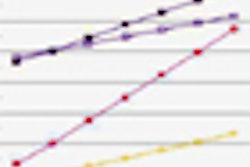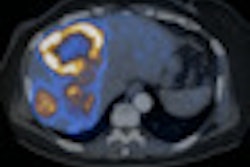The U.S. National Institutes of Health (NIH) is requiring imaging vendors to include radiation dose-tracking technology in scanners they sell to the NIH as part of an effort to track radiation derived from imaging studies, according to the February edition of the Journal of the American College of Radiology.
The standards, which will require the implementation of new technologies by all vendors doing business with the NIH, are one of the first steps toward developing a standard for tracking radiation dose that can be used by healthcare facilities nationwide.
The real risks of cancer from exposure to medical radiation may be unknown, but it is clear that Americans are being exposed to more radiation every year in imaging exams, NIH radiologists wrote in an article in this month's Journal of the American College of Radiology (February 2010, Vol. 7:2).
Citing statistics from the National Council on Radiation Protection and Measurements concluding that Americans received seven times more medical radiation in 2006 than in the 1980s, NIH physicians Dr. Ronald Neumann and Dr. David Bluemke, Ph.D., used the article to announce a series of steps to improve tracking of patients' exposure.
The new policy will be instituted in cooperation with major equipment vendors, beginning with CT and PET/CT scanners, they wrote. It calls for all vendors that sell imaging equipment to the NIH's Radiology and Imaging Sciences division to provide a routine means for radiation dose exposures that can be recorded in an electronic medical record (EMR). This requirement will enable the cataloging of radiation exposures from imaging tests, they said.
Most of the time, dose information is already being recorded, they noted, but it is not routinely being entered into the DICOM header for CT and PET/CT studies. Help from manufacturers in standardizing reporting algorithms "will allow these data to be entered and subsequently extracted" from the DICOM headers for eventual storage in a RIS or, preferably, in a hospital-based EMR, they wrote.
These steps won't be sufficient by themselves to perform a population-based assessment of cancer risk from low-dose radiation, but they are necessary to begin compiling a database, they wrote. In any case, the Obama administration's proposals to "implement and standardize elements of EMRs could eventually provide for a large population dataset for subsequent epidemiologic studies to assess radiation risk from lifelong medical testing," wrote Neumann and Bluemke.
Vendors will also be required to ensure that radiation exposure can be tracked by patient, a goal that is consistent with the recommendations that "patients should keep a record of their x-ray history," they wrote.
By Eric Barnes
AuntMinnie.com staff writer
February 1, 2010
Related Reading
Software offers alerts for patients with past CT scans, January 28, 2010
Studies spotlight high CT radiation dose, increased cancer risk, December 14, 2009
Shock and awe over JAMA editorial, October 22, 2009
Australian software automates data mining of CR dose, September 9, 2009
NEJM study: Imaging procedures, radiation growing, August 26, 2009
Copyright © 2010 AuntMinnie.com




















